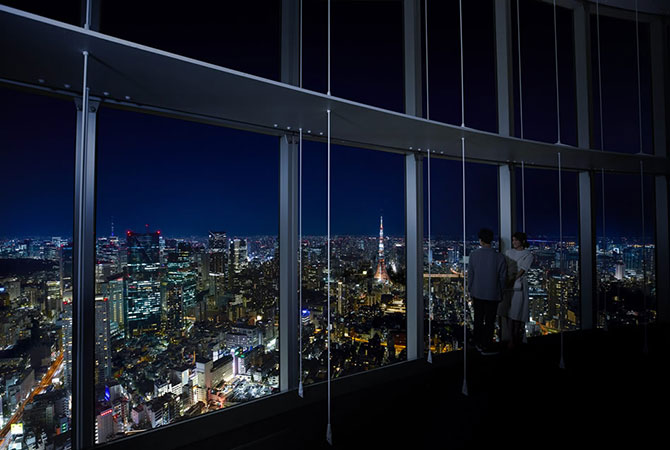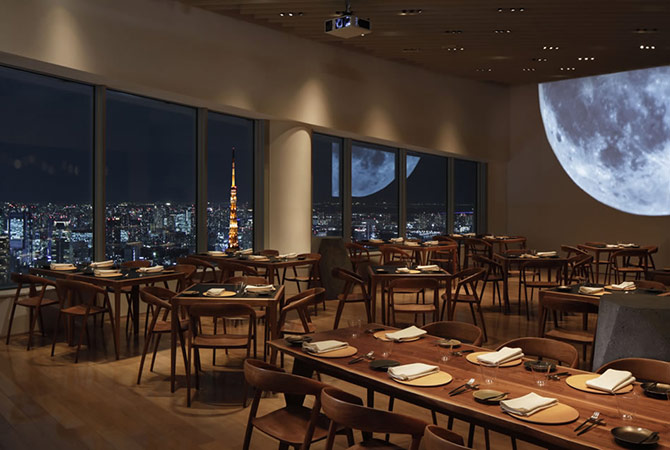
- Share this page
Share this page
- EN
Select Language
- FAVORITES
- Search
Detailed search: You can do a detailed search by keyword, genre, time, area and tag.
Main content starts here.
- Visit Tokyo |
- SPOT |
- Southern Tokyo |
- A guide to Roppongi: art, dining, nightlife, and more
Updated: December 19, 2025
A guide to Roppongi: art, dining, nightlife, and more
One way to think about Roppongi is that it has two sides. On the one hand Roppongi is one of Tokyo’s most opulent, upmarket areas, featuring world-class art museums, Michelin-starred restaurants and lots of luxury shopping destinations. On the other hand it is one of Tokyo’s most raucous party neighborhoods, full of restaurants, bars and clubs that stay open late.
These two sides of Roppongi contrast, but they do not clash. It has a cosmopolitan flavor with an exciting mix of high and low.
How to Get There
Access Roppongi Station by taking the Tokyo Metro Hibiya Line or the Toei Oedo Line. The Tokyo Metro Chiyoda Line stops at Nogizaka Station from where central Roppongi is just a short walk.
From Haneda Airport: 50 minutes by train.
From Narita Airport: around an hour by train.
From Shinjuku Station: Nine minutes on the Toei Oedo Line to Roppongi Station.
From Tokyo Station: Take the Tokyo Metro Marunouchi Line to Kasumigaseki, and transfer to the Tokyo Metro Hibiya Line for Roppongi Station. Travel time: 26 minutes.
About Roppongi
Roppongi (六本木 in Japanese) is an area of central Tokyo located in Minato City. It’s right in the heart of things, close to many of Tokyo’s other most bustling areas. Meguro, Ebisu, Ginza, and Tokyo Tower aren’t far either.
The heart of Roppongi is the famous Roppongi Crossing, a busy four-way intersection underneath an expressway for cars, which is emblazoned with two instances of the word “Roppongi” that form a sort of dynamic tunnel shape, drawing you into the excitement.
Spend a day at two amazing complexes
Roppongi is anchored by two huge, fantastic mixed-use developments, which sit in different corners of the neighborhood: Roppongi Hills and Tokyo Midtown. Both have some amazing food and drink options, fantastic arts and culture offerings, outposts of world-famous luxury brands, and great spaces to lounge and relax.
To walk from one complex to the other takes 15-20 minutes (they are roughly one kilometer apart).
Roppongi Hills
Roppongi Hills is a massive complex centered on the skyscraper Mori Tower, the bottom floors of which have retail and restaurants. On the higher floors, you’ll find the Mori Art Museum and the Tokyo City View indoor observation deck. If you want a sweeping view of Tokyo, you can’t do much better than that. Tokyo City View stays open into the evening, so if night views are your thing, you’re in luck. The annual wintertime Keyakizaka Illumination is also a must-see, when the zelkova trees along Keyakizaka Street next to Roppongi Hills are decked out with brilliant strands of lights.
 Courtesy of Tokyo City View
Courtesy of Tokyo City View
Tokyo Midtown
The centerpiece of Tokyo Midtown is Midtown Tower, which has the Tokyo Ritz-Carlton occupying its upper floors. You could head to the Galleria, Midtown’s main shopping area, which features a lovely Garden Terrace. Or you could check out some art (more on that below).
Here as well, make sure to stroll through the beautiful lights displays of Tokyo Midtown (Midtown Christmas, featuring the Starlight Garden) in the winter.


The full range of restaurants
Whatever kind of dining experience you’re after—from high-end gourmet, to casual izakaya, to a quick bite to go—Roppongi has you covered.
Fine dining
One great example at the high end is the Roppongi branch of Sukiyabashi Jiro, the sushi restaurant made famous the world over by the movie Jiro Dreams of Sushi, although it is almost impossible to get reservations there. However, Roppongi is full of other options for fantastic Japanese cuisine— including sushi, kaiseki, and shabu shabu. Roppongi also has some great Western-style fine dining, such as The Moon, a French restaurant on the 52nd floor of Mori Tower, and Jean-Georges Tokyo, run by—who else?—world-renowned chef Jean-Georges Vongerichten.


Going more casual
If you’re out late and in need of sustenance, grab a yakitori, a bowl of ramen, a burger, or a doner kebab…
In keeping with Roppongi’s international flavor, most restaurants, both the fancy ones and the not-so-fancy ones, will be comfortable interacting with customers in English, and perhaps other languages as well. And Roppongi is also home to the Tokyo locations of international restaurant chains like Hard Rock Café.


Excellent art
The Art Triangle Roppongi is the name given to three superb museums located in Roppongi, all within walking distance of each other: the Mori Art Museum, the Suntory Museum of Art, and the National Art Center, Tokyo.
The National Art Center, Tokyo
The National Art Center, Tokyo is Japan’s only national art museum that does not have a permanent collection. Instead, it holds various special exhibitions and hosts many Artist Associations’ exhibitions. The building, designed by famed architect Kisho Kurokawa with this purpose in mind, has one of the largest exhibition spaces in the country.

©The National Art Center, Tokyo

Suntory Museum of Art
The Suntory Museum of Art is located on the 3rd floor of Tokyo Midtown, and boasts an impressive collection of Japanese artwork and traditional crafts, as well as the must-see architecture of Kengo Kuma.

©Keizo Kioku
Mori Art Museum
The Mori Art Museum is found on the top floor of Roppongi Hills Mori Tower. Its focus is on contemporary art from Japan and Asia, although it also has featured artists from around the globe. It puts on world-class special exhibitions year-round.

Center Atrium (Photo courtesy: Mori Art Museum, Tokyo)

Museum Cone at Night (Photo courtesy: Mori Art Museum, Tokyo)
Roppongi Art Night
If you’re in town at the right time of year, one unmissable art event is Roppongi Art Night. It’s a one-night extravaganza that’s all about making art more fun.

At the opening of Roppongi Art Night 2019
Shopping, from ultra-luxury goods to great bargains
If you’re shopping in Roppongi, you’ll find a mix of high-end luxury and unpretentious fun. You could start by perusing the luxury offerings at Roppongi Hills, then head to the Don Quijote Roppongi, the iconic Japanese department store filled from floor to ceiling with an incredible variety of goods at rock-bottom prices.

Roppongi’s amazing nightlife
After the sun sets, the wild side of Roppongi comes alive. Its reputation as an area full of great nightlife precedes itself. If you’re looking for a big night out in Tokyo, you’re in the right place. Sip on a craft beer or a nice glass of wine, do a few rounds of shots, or dance all night and into the morning—you’ve got a huge range of bars and clubs to pick from.
Theater
Roppongi is also home to EX THEATER ROPPONGI, a multi-purpose 920-seat entertainment space that opened in 2013 and is not far from Roppongi Hills. The facility hosts live performances, concerts and film showings.


